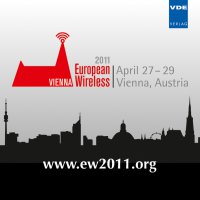Energy Efficiency Analysis of Two-Tier Heterogeneous Networks
Conference: European Wireless 2011 - Sustainable Wireless Technologies
04/27/2011 - 04/29/2011 at Vienna, Austria
Proceedings: European Wireless 2011
Pages: 5Language: englishTyp: PDF
Personal VDE Members are entitled to a 10% discount on this title
Authors:
Quek, Tony Q. S.; Cheung, Wang Chi (Institute for Infocomm Research, A*STAR, 1 Fusionopolis Way, #21-01 Connexis, Singapore 138632)
Kountouris, Marios (SUPELEC, Plateau de Moulon, 3 rue Joliot-Curie, 91192 Gif Sur Yvette, France)
Abstract:
With the exponential increase in data traffic driven by a new generation of wireless devices, data is expected to overwhelm cellular network capacity in the next few years. To address this issue, heterogeneous networks have recently being considered as a comprehensive approach to provide high cellular network capacity and coverage. However, the dense and random deployment of small cells and their uncoordinated operation raise important questions about the energy efficiency implications of multi-tier networks. In this paper, we analyze the energy efficiency of downlink two-tier heterogeneous networks, i.e. a network of macrocell base stations overlaid by randomly distributed picocell base stations, where each tier serves a disjoint set of users. Using tools from stochastic geometry, we first derive analytical expressions of success probabilities for each tier when a disjoint set of subchannels is employed. In addition, we evaluate the performance of two-tier networks in terms of energy efficiency and fairness of resource allocation. Numerical results confirm that there exists an optimal pico-macro density ratio that maximizes the overall energy efficiency of such a two-tier network. This work provides essential understanding for successful deployment of green heterogeneous networks.


